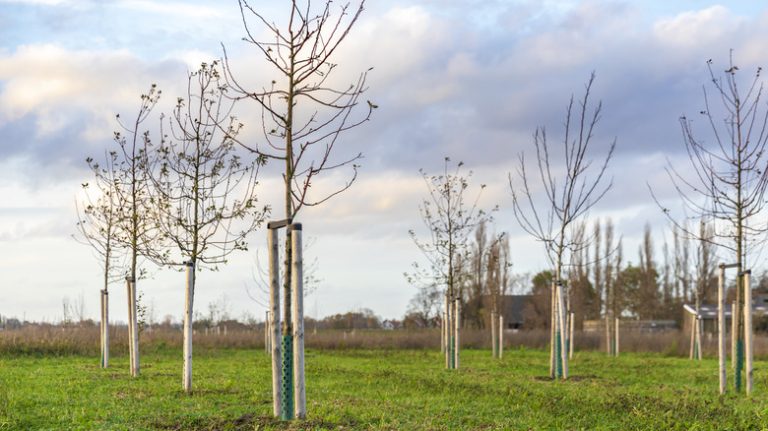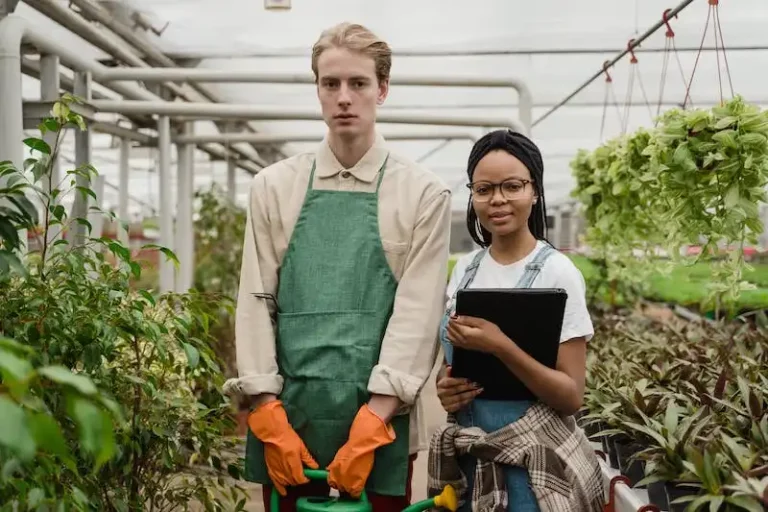Bonsai is an ancient art form that has captivated the hearts of many gardening enthusiasts. While some may forget about their plants during the winters, bonsai owners know that they’re there to stay. Unlike others, bonsai trees are not a seasonal choice and naturally grow all year round. This makes them a great option for beginners who want to grow something more than just flowers.
When choosing a bonsai tree, there are a few criteria to keep in mind. The ginseng ficus and Japanese maple (Acer palmatum) are two great options for beginners. These plants are relatively easy to care for, both indoors and outdoors. The ginseng ficus loves the warmer weather and thrives in tropical climates, while the Japanese maple prefers temperate regions.
It’s worth mentioning that some bonsai trees require more attention and care than others. For example, the Chinese elm (Ulmus parvifolia) and the portulacaria afra (commonly known as the “elephant bush” or “dwarf jade”) are ranked among the easiest bonsai trees for beginners. These trees can survive low humidity levels and can even tolerate being left outdoors in colder temperatures.
Placing your bonsai tree in the right spot is crucial. Most bonsai trees prefer a bright spot, like a window, where they can receive the necessary amount of sunlight. This helps the tree to grow and bend naturally, creating its unique shape. While some trees, like the crabapple, love the outdoors, others, like the Chinese elm, are better suited for indoor environments.
In conclusion, bonsai trees are a great choice for beginners who want to explore the world of gardening. With a little help and some basic knowledge, anyone can successfully grow and care for a bonsai tree. Whether you choose an oval-shaped Japanese maple or a small portulacaria afra, the possibilities are endless. So why not give it a try and experience the joys of bonsai for yourself?
Bonsai Trees For Beginners
Choosing the right bonsai tree can be daunting for beginners, but with a little guidance, it’s not as difficult as it once seemed. Bonsai trees were originally cold-hardy trees that were grown outdoors and required a certain level of expertise to keep them alive and thriving. However, with the right guide, every beginner can enjoy the beauty and tranquility of growing their own bonsai tree.
Most bonsai trees are quite hardy and can withstand different climates. Some of the most popular types include the Japanese Maple (Acer palmatum), the Larch (Larix), the Crabapple (Malus), and the Ficus. These trees thrive in temperate conditions and can be kept both indoors or outdoors, depending on personal preference.
The Japanese Maple, with its beautiful oval-shaped leaves, is one of the easiest bonsai trees to grow for beginners. It does well both indoors and outdoors and even produces small flowers. The Larch and Crabapple trees are also relatively easy to care for, requiring moderate watering and protection from extreme cold.
The Ficus is another popular choice for beginners as it can adapt to various environmental conditions. It loves humidity and grows naturally like a little palm tree. It can be kept indoors or outdoors, making it a versatile option for beginners.
If you’re a beginner looking for a bonsai tree that requires minimal effort and care, the Portulcaria (Jade) or the Ginseng Ficus are great choices. These trees have fine growth and are relatively low-maintenance, making them perfect for beginners who are still learning the ropes.
When choosing your first bonsai tree, consider your living conditions and personal preferences. If you have limited space, indoor bonsai trees like the Ficus or the Ginseng Ficus are better options. If you have a larger outdoor area, you have more choices available.
Remember that each bonsai tree has different care requirements, so it’s important to gather as much information as possible about your chosen type. This will help you provide the proper care, including watering, soil, and protection from extreme cold or heat.
Growing bonsai trees can be a rewarding experience for beginners, as it requires patience and dedication. But with the right type of tree and proper care, anyone can create a beautiful and unique bonsai tree that will bring years of enjoyment.
The Best Bonsai Trees For Beginners
Choosing the right bonsai tree for beginners can be a daunting task. With so many options to choose from, it’s hard to know where to begin. To make your decision a little easier, we have ranked the top 5 bonsai trees for beginners based on their care requirements, growth habits, and overall beauty. Keep in mind that every bonsai tree requires specific care, so it’s important to do your research before choosing.
- Japanese Maple (Acer palmatum): This is a popular choice among beginners because of its fine, delicate leaves and beautiful colors. Japanese Maples can be grown indoors or outdoors, depending on the climate. They require a cool winter dormancy period to thrive.
- Portulcaria (Portulacaria afra): Also known as the “Jade tree”, this bonsai is considered one of the most forgiving for beginners. It has small, fleshy leaves and the ability to store water in its trunk, making it a great choice for forgetful or busy caretakers. Portulcaria is an outdoor bonsai that prefers warm and dry climates.
- Ficus (Ficus benjamina): Ficus bonsai trees are popular for their ease of care and fast growth. They have shiny, dark green leaves and can be kept indoors or outdoors. Ficus is a great starter bonsai for beginners because it is forgiving and can tolerate a variety of conditions.
- Ginseng Ficus (Ficus retusa): This bonsai tree has thick, shiny leaves and a unique, bulbous root system that gives it the appearance of a ginseng root. Ginseng Ficus is a beginner-friendly bonsai that grows well indoors and can tolerate lower light conditions. It is a slow-grower, making it easy to keep its shape.
- Juniper (Juniperus): Junipers are a classic choice for beginners because they are hardy, forgiving, and adaptable. They have needle-like leaves and the ability to form twisted, gnarled trunks and branches. Junipers are outdoor bonsai that prefer cooler climates.
When choosing a bonsai tree for beginners, it’s important to consider your specific criteria and the conditions you can provide. Remember to research each tree’s care requirements and maples, junipers, and ficus bonsai are especially good choices for beginners, but ultimately, the best bonsai tree for you is the one that you feel a connection with and will enjoy caring for.
Bonsai For Beginners
When it comes to bonsai for beginners, there are many options to choose from. Bonsai trees are small, potted plants that are trained and pruned to resemble full-sized trees. They require special care and attention, but with proper knowledge and dedication, anyone can begin this rewarding journey.
First, it’s important to understand what makes a good bonsai for beginners. Some of the easiest species for beginners include junipers, cotoneaster, ginseng ficus, and portulacaria. These trees are widely available and can tolerate a range of conditions, making them more forgiving for beginners.
When choosing a bonsai tree, consider factors such as the local climate, available space, and personal preferences. For example, if you live in a colder region, a larch or maple bonsai may be a better option than a tropical tree. Similarly, if you have limited space, a small bonsai like a carmona or a baby jade is a good choice.
One of the key aspects of bonsai care is watering. Bonsai trees typically require daily watering, but the frequency may vary depending on the species and the season. It’s important to keep the soil moist, but not soggy, to prevent root rot. To ensure proper drainage, it’s recommended to use a bonsai pot with drainage holes.
In addition to watering, bonsai trees also need proper sunlight, humidity, and fertilization. Most bonsai thrive in bright, indirect light, so placing them near a window or using grow lights can be beneficial. Bonsai trees from tropical regions, such as ficus and portulacaria, require higher humidity levels, which can be achieved by placing a tray filled with water near the tree.
When it comes to pruning and shaping, beginners can start by removing any dead or overgrown branches. This helps improve the overall appearance and health of the tree. Regular pruning and wiring can help maintain the desired shape and size of the bonsai tree.
For those who prefer outdoor bonsai, it’s important to choose a species that is suitable for the local climate and can withstand the winters. Junipers, pines, and larch trees are popular choices for outdoor bonsai. These trees are more cold-hardy and can survive in a variety of climates.
Lastly, it’s essential for beginners to gather as much information as possible about their specific bonsai species. Each type of bonsai has its own unique care requirements, and it’s important to understand these needs to ensure the tree’s health and longevity.
In conclusion, bonsai for beginners can be an exciting and rewarding hobby. With the right care, dedication, and knowledge, anyone can enjoy the beauty and tranquility of bonsai trees. Whether you choose a Japanese maple or a small ginseng ficus, bonsai can bring a sense of calm and connection with nature to your living space. So don’t be intimidated and start your bonsai journey today!


